At last week’s Computex Taipei trade show, the first full-scale physical edition since the pandemic, Noctua displayed a wide range of upcoming products and prototypes including offset and direct die mounting solutions for AMD AM5, more chromax.black heatsinks as well as CPU coolers for AMD’s Ryzen 7000 series Threadripper processors. Noctua also gave insights into the development process of its upcoming next-gen 140mm fan as well as a preview of the second generation NH-D15 cooler that will utilise this fan.


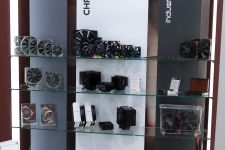
Long-awaited by customers, Noctua’s next-gen 140mm fan has been subject to repeated delays. At Computex, Noctua gave exclusive insights into the challenges of the development process and manufacturing of this fan. While the project was started as early as 2015, it took until 2020 and several iterative feedback cycles with new approaches in construction until the performance benchmark of providing a meaningful improvement over NF-A14 and NF-A12x25 with NA-FMA1 adaptors was finally reached. By October 2021, the design was finalised for manufacturing and the tooling phase was initiated. After designing, manufacturing and validating the injection moulding tool, the final validation phase started in June 2022. Unfortunately, the Manufacturing Validation Test (MVT) revealed a minute deviation at the fan hub at after several years of usage at elevated temperatures as simulated by this accelerated lifetime test. Since the MVT has to run for 4 months and takes several weeks to prepare and analyse, this prompted Noctua to delay the release of the fan by one year in late 2022 in order to give sufficient time for root cause analysis, corrective action and repetition of the test. After temperature fluctuations in the cooling fluid were identified as the root cause and corrected, the second MVT test passed, yet the Long-term Thermal Creep Validation (LTCV) showed tolerance issues due to mounting pressure from heatsink fan clips and radiator mounting screws. To avoid this issue, Noctua now plans to use Sterrox® LCP not only for the impeller, but also for the frame of the fan to make it more resistant against external stress. If the ongoing validation tests show no further issues, Noctua targets to start mass production in late 2023 and bring the fan to the market in Q1 2024.
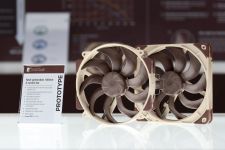
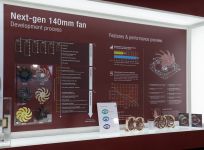
What makes the next-gen 140mm fan so challenging to manufacture is its ultra-tight tip clearance of only 0.7mm, which is more difficult to implement than the 0.5mm of NF-A12x25 due to the longer blade radius, higher centrifugal forces and higher rotating mass. This results in extremely tight tolerances where minute deviations in the range of a tenth of a millimetre can cause concerns regarding the targeted lifetime of more than 10 years. While increasing the clearance would be an easy solution, it would involve severe performance penalties due to increased wingtip vortices and backflow in high resistance applications. Therefore, Noctua is fully committed to overcoming the challenges in mass production in order to reap the fan’s full potential of providing improvements of up to 3°C in a noise normalised comparison to NF-A14 on a typical 140mm radiator at a 200W heatload.
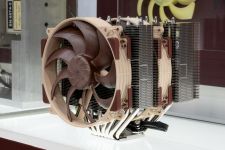
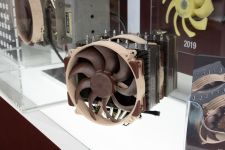

Since it will utilise the next-gen 140mm fan, the timeline for the second generation of the award-winning NH-D15 CPU cooler depends on the timeline for the fan and targets a Q2 release if there are no further delays with the fan. Thanks to the new fan’s superior P/Q performance, Noctua could reduce the heatsink’s fin pitch from 1.9 to 1.6mm, increasing its surface area by 20% without increasing the size. This plus the increase from 6 to 8 heatpipes are the keys to the new generation’s superior performance: The on-site live demonstration at a heatload of 300W illustrated an improvement of around 3-3.5°C. While the next gen 140mm fan and NH-D15 cooler won’t be on the market before next year, Noctua’s new offset mounting bars for AMD AM5 processors will be released in mid-June: By offsetting the heatsink 7mm towards the south side of the socket, more pressure is applied right above the CPU’s CCD(s). This improved contact exactly at the processor’s hotspot can significantly reduce CPU temperatures with typical improvements in the range of 1-3°C. The new offset mounting bars will be available via Noctua’s website or Amazon for a service charge of EUR 3.90 (website form) or EUR/USD 4.90 (Amazon) that helps to cover parts of the shipping and handling costs.
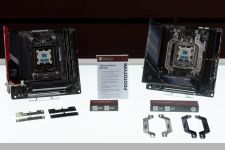
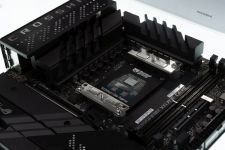

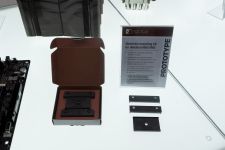
For further optimising thermal performance on AM5, Noctua displayed direct die mounting spacers. Developed in cooperation with Roman “der8auer” Hartung, the spacers make it possible to use Noctua CPU coolers on delidded AMD AM5 processors. Removing the processor’s integrated heat spreader (delidding) and putting the heatsink directly onto the dies allows for much more efficient thermal transfer and can thereby lower CPU temperatures significantly, with typical gains in the range of 10-15°C. The kit contains spacers that are put underneath the heatsink’s fastening bracket(s) in order to make up for the height of the removed heat spreader as well as custom, longer screws that make it possible to reinstall the fastening brackets with the spacers in place. All other parts that are required for delidding and direct die cooling (delidding tool, direct die frame for protecting the CPU, liquid metal thermal compound) must be purchased separately. The kit will be available through Noctua’s website for EUR 4.90 from end of June. Noctua will also make the 3D files available via Printables.com so that customers can print the spacers themselves.
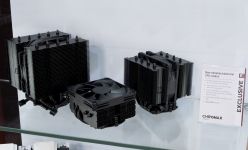
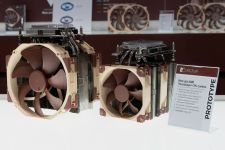
Other items on display included chromax.black versions of the award-winning CPU cooler models NH-D12L, NH-D9L and NH-L9x65, which are scheduled for release in Q4 2023, as well as 14cm and 9cm coolers for AMD’s next-gen Threadripper processors, which Noctua intends to introduce in October.
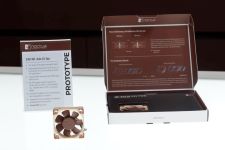
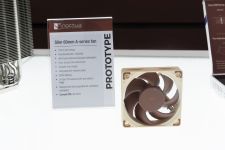
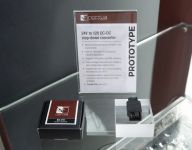
Both the new 24V version of NF-A4x10 and the new slim 60mm fan have been shown in their final production versions and should be ready for release in Q4 this year. Last but not least, the long-awaited 24V-to-12V step-down converter was on display again and will be released later this month.

 O-Sense
O-Sense







.png)

